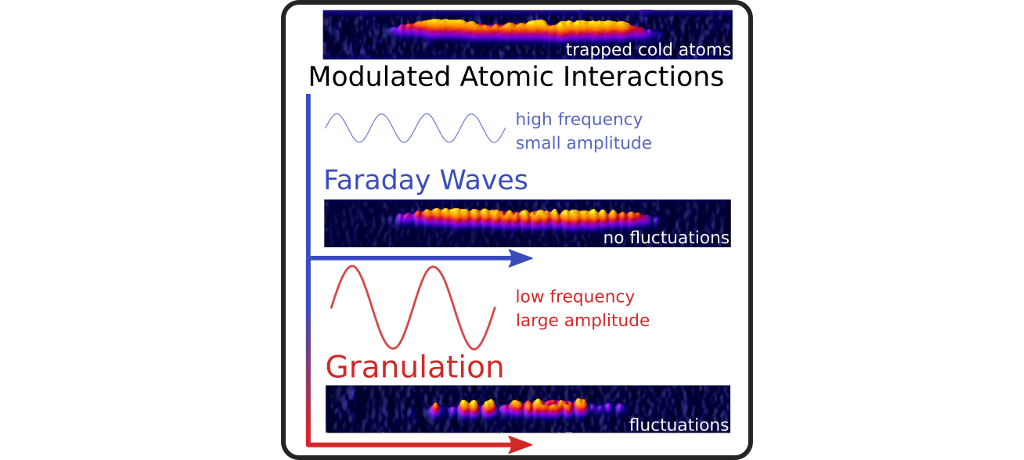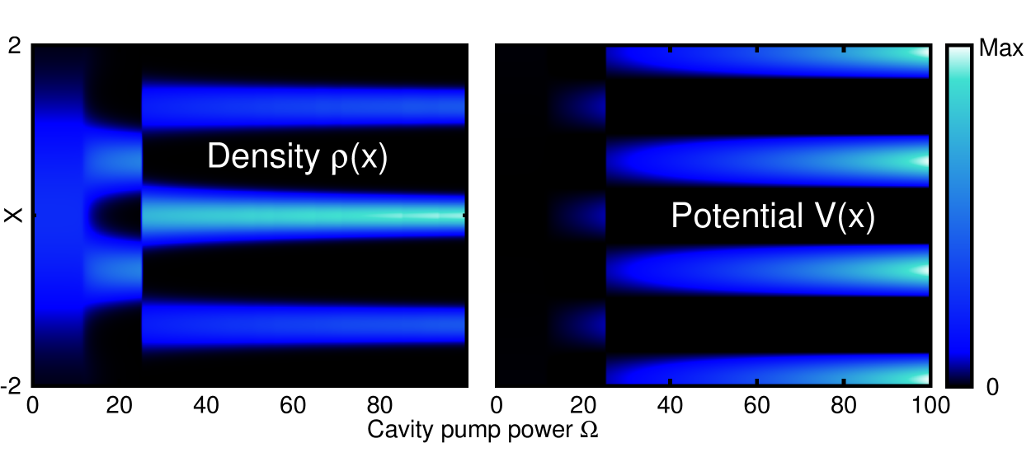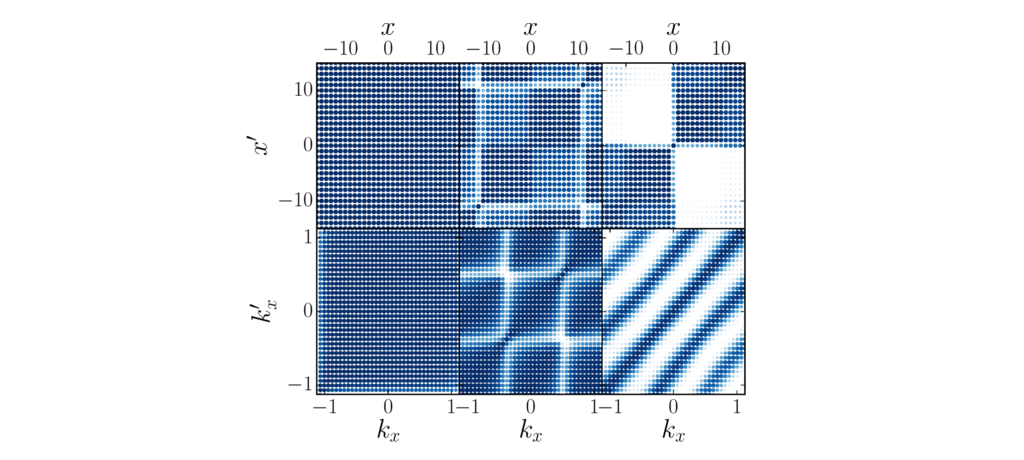NJP: Fragmented superradiance and polarization in two-component Bose-Einstein condensates in a cavity
If you place an atom inside such an optical cavity and put photons inside that can talk to the atom, this photon will go through many cycles of getting absorbed by the atom and being re-emitted into the optical cavity. Now, put in many of those atoms, i.e., a so-called Bose-Einstein condensate, a state of matter where these atoms lose their identity and may behave like one big giant atom in this optical cavity. The interaction or how these atoms talk to the bouncing light in the optical cavity gives rise to rich physics. For instance if you jack up the amount of light within those mirrors, this manipulates the atoms' internal state as if they are dancing within themselves, forced by the light.
In this paper, we show how the interactions between atoms assisted by interactions of the atoms with light triggers the atoms to split into distinct groups as soon as the amount of the scattered light trapped between the mirrors is sufficiently large. The formation of these groups is called "fragmentation" and the conglomeration due to the light is referred to as "superradiance". We also show that increasing the light pumped into the cavity can also lead to the break down of the Dicke model, a model widely used for describing atoms fixed in space talking to light within a cavity mirrors (see image). Read more at arXiv:1801.09448 and NJP, 20, 055006 (2018).









